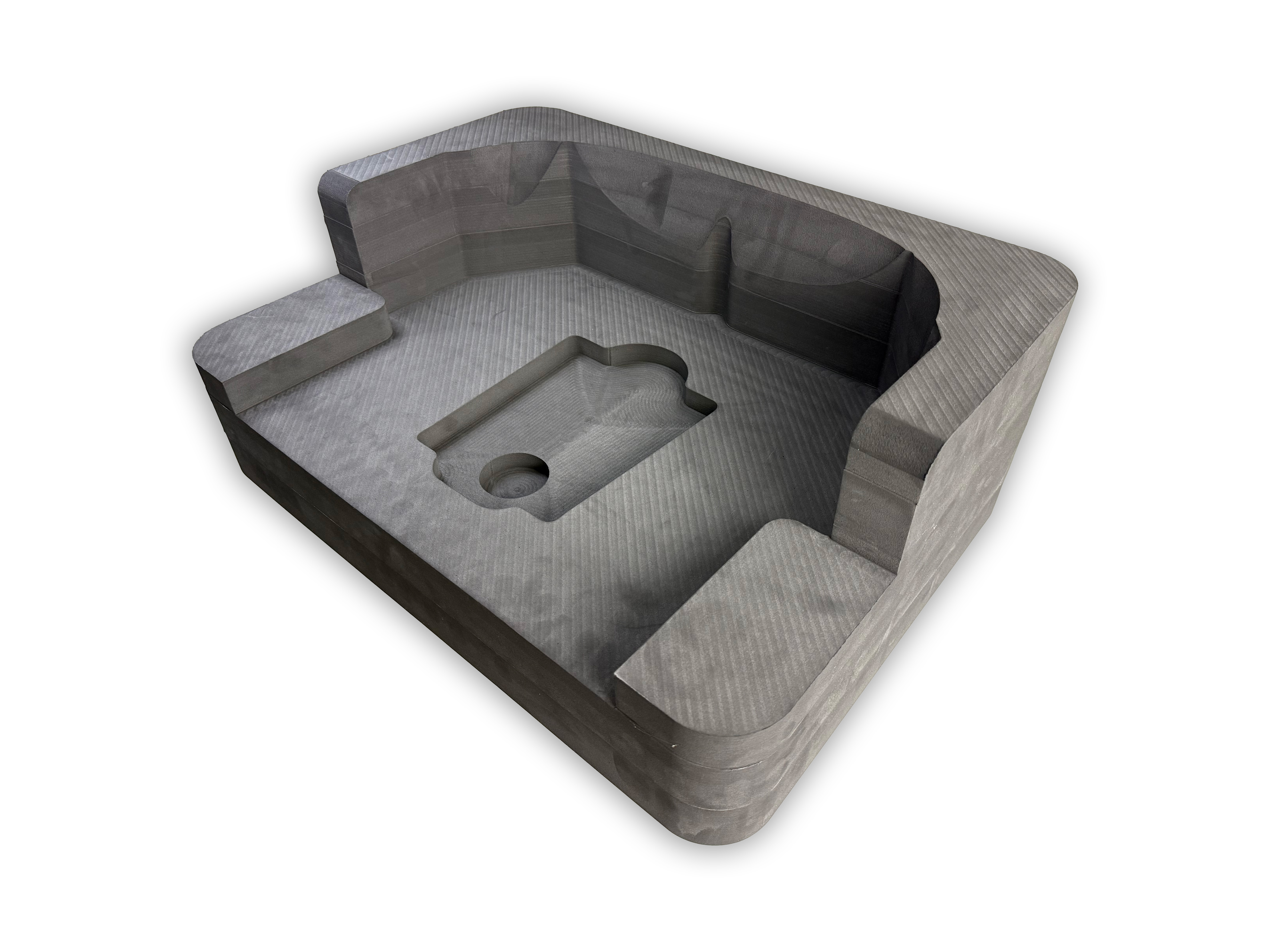How to Make Custom Foam Inserts: A Complete Guide
2025-08-11
When it comes to protecting delicate products or creating organized storage solutions, custom foam inserts are an essential choice. Whether you're packaging electronics, sports equipment, or drones, the right foam design can provide optimal protection, enhance presentation, and improve user experience. In this guide, we’ll explain step-by-step how to make custom foam inserts, the materials you can use, and professional manufacturing tips.

Fubo is a professional foam manufacturer located in Xiegang, Dongguan, Guangdong, China. We specialize in producing foam for electronics, appliances, computers, hardware, sports equipment, vacuum cleaners, drones, LED products, and more. We provide high-quality buffering, shock absorption, and OEM solutions for industries such as semiconductors and new energy. Our product range includes:
- Customized EVA foam inner lining
- EVA foam swimming board
- EVA toys with numerical letters
- EVA cushioning and protective material
- Soilless culture foam board
Table of Contents
- 1. Understanding Custom Foam Inserts
- 2. Benefits of Using Custom Foam Inserts
- 3. Choosing the Right Foam Material
- 4. Tools and Equipment for Foam Cutting
- 5. Step-by-Step Process to Make Custom Foam Inserts
- 6. Professional Manufacturing and OEM Options
- 7. Maintenance and Longevity Tips
- 8. Summary Table
- 9. References
1. Understanding Custom Foam Inserts
Custom foam inserts are precision-cut foam pieces designed to hold, protect, and organize products within packaging or storage cases. They are widely used in electronics, photography equipment, tools, and aerospace applications. The foam can be shaped to fit each item perfectly, preventing movement and damage during transportation or storage.
2. Benefits of Using Custom Foam Inserts
- Enhanced Protection: Prevents scratches, impacts, and vibration damage.
- Professional Presentation: Gives a premium look to packaging.
- Organization: Keeps items in place for easy access.
- Customization: Tailored fit for any shape or size.
- Durability: High-quality foam lasts for years.
3. Choosing the Right Foam Material
Selecting the right foam is critical for achieving the desired protection and appearance. Common foam materials include:
- EVA Foam: Known for durability, flexibility, and excellent cushioning. Ideal for electronics and sports equipment.
- Polyethylene Foam (PE): Lightweight, water-resistant, and resilient.
- Polyurethane Foam (PU): Soft and flexible, great for delicate items.
- Cross-linked Polyethylene Foam (XLPE): Offers extra rigidity and chemical resistance.
Tip: For high-end packaging, EVA foam is a popular choice due to its combination of durability and aesthetics.
4. Tools and Equipment for Foam Cutting
To create custom foam inserts, you’ll need tools that allow for precision cutting:
- Utility knives or foam cutting knives
- Hot wire foam cutters
- Laser cutting machines
- CNC foam cutting equipment
- Templates and stencils for accuracy
5. Step-by-Step Process to Make Custom Foam Inserts
Step 1: Measure Your Items
Accurate measurements are the foundation of a perfect fit. Measure the length, width, and height of each object, including any protruding parts.
Step 2: Choose Foam Type and Thickness
Select foam material based on the item’s weight, fragility, and required protection level. Thickness should provide enough cushioning on all sides.
Step 3: Create a Layout Design
Arrange item outlines on paper or digitally to determine the best placement. Ensure there is adequate spacing between objects for protection.
Step 4: Transfer Measurements to Foam
Mark cutting lines on the foam using a marker or chalk. Use templates for complex shapes.
Step 5: Cut the Foam
Use the chosen cutting method (manual knife, hot wire, CNC, or laser). For professional results, CNC cutting ensures precise and clean edges.
Step 6: Test Fit and Adjust
Insert each object into its cutout to ensure a snug fit. Adjust as needed to prevent loose movement.
Step 7: Finish and Assemble
If the insert will be placed inside a case or box, secure it with adhesive or ensure it fits tightly to prevent shifting.
6. Professional Manufacturing and OEM Options
For businesses, outsourcing to a professional manufacturer like Fubo ensures consistent quality and efficiency. We offer:
- Custom design consultation
- OEM and ODM services for bulk orders
- Precision CNC and laser cutting
- Material selection advice
- Rapid prototyping for new projects
Our expertise spans industries such as semiconductors, drones, LED products, sports equipment, and household appliances, ensuring your foam inserts meet both protective and aesthetic standards.
7. Maintenance and Longevity Tips
- Store foam inserts in a dry, cool environment to prevent degradation.
- Clean with mild soap and water; avoid harsh chemicals.
- Replace damaged sections promptly to maintain protection.
- Avoid prolonged UV exposure, which can weaken foam.
8. Summary Table
| Key Aspect | Details |
|---|---|
| Best Material for Custom Inserts | EVA foam for durability and aesthetics |
| Essential Tools | Utility knife, CNC cutter, laser cutter |
| Main Steps | Measure → Select material → Design → Cut → Test fit → Assemble |
| OEM Advantage | Consistent quality, bulk efficiency, customization |
| Maintenance Tip | Store in cool, dry place; clean gently |
9. References
- Fubo Foam Official Website
- Foam - Wikipedia
- Packaging Strategies
- Engineering Toolbox
